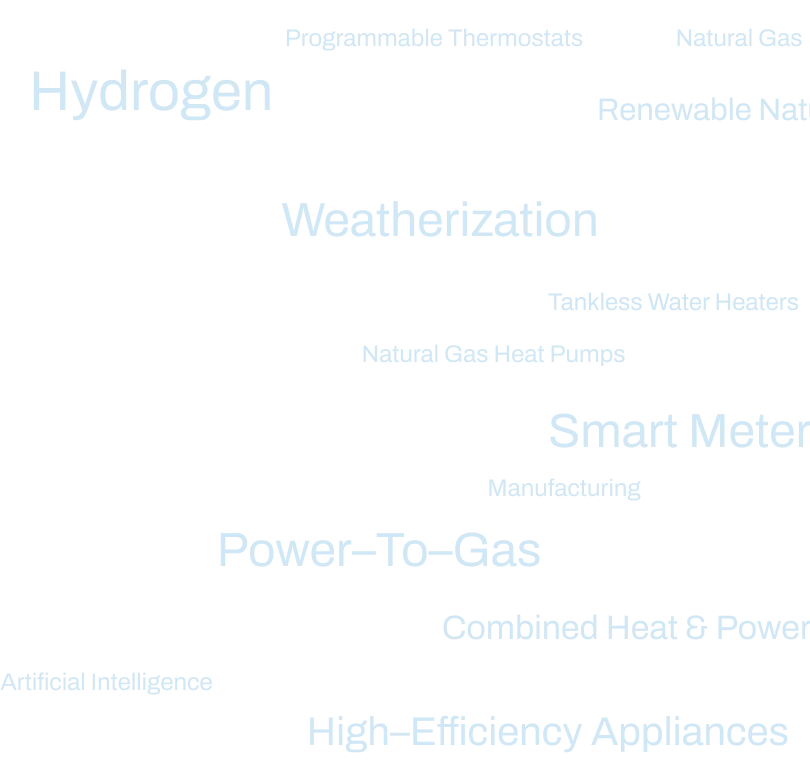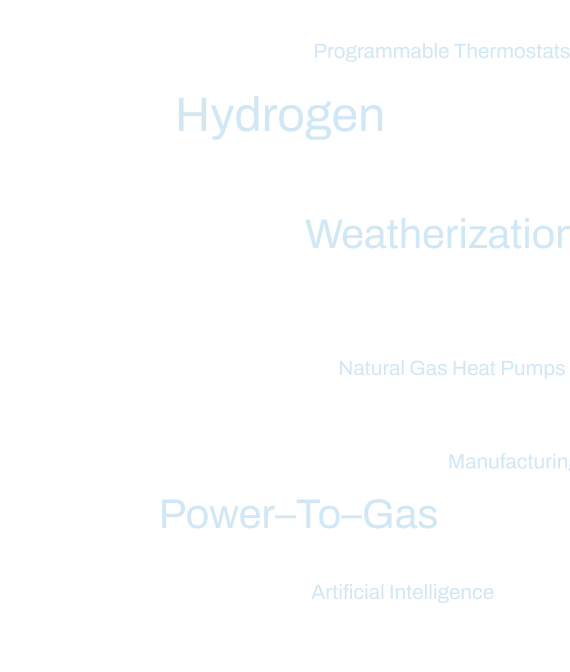Natural Gas is
advancing through smart
Innovation
America's natural gas utilities are committed to reducing greenhouse gas emissions through smart innovation.

AGA's Climate Change Position Statement
The American Gas Association is committed to reducing greenhouse gas emissions through smart innovation, new and modernized infrastructure, and advanced technologies that maintain reliable, resilient and affordable energy service choices for customers.
www.aga.org/climate
Renewable Natural Gas
Renewable Natural Gas (RNG) is pipeline compatible gaseous fuel derived from biogenic or other renewable sources that have lower lifecycle carbon dioxide equivalent emissions than geological natural gas.
RNG can be produced from various waste streams including farms, landfills and water resource recovery facilities or from renewable electricity.

Power to Gas
Renewable electricity is used to split water into hydrogen and oxygen through a process called electrolysis. This renewable hydrogen can be blended into the pipeline or combined with CO 2 to create RNG.
Anaerobic Digestion
The most common way to produce RNG today, organic material such as animal or plant waste is broken down by microorganisms creating methane.
Our Clean Hydrogen Future
The U.S. possesses the most extensive gas pipeline delivery network in the world, and extensive research and testing is underway now to make leveraging this infrastructure to deliver clean hydrogen (H 2 ) in the future a reality. Gas utilities are connecting hydrogen production to end users nationwide.




